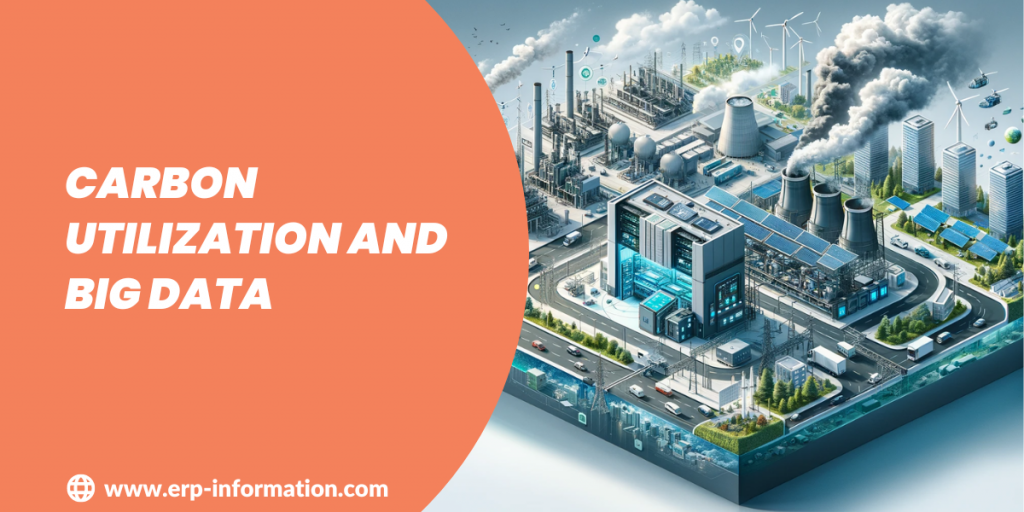Technologies that convert carbon dioxide into valuable products or materials, such as carbon capture utilization (CCU) and direct air capture (DAC), aim to provide economic incentives for capturing and utilizing CO2.
Carbon utilization involves capturing CO2 emissions from industrial processes and converting them into valuable products, preventing the release of greenhouse gases into the atmosphere. This process not only reduces environmental impact but also creates economic opportunities.
Industries like cement, iron and steel, oil refining, and petrochemicals contribute about 22% of global CO2 emissions, with oil refineries alone responsible for 4%–6%. CCS involves capturing CO2 where it’s produced and keeping it from entering the air.
This post explores the impact of Carbon Utilization and Big Data in industries, fostering sustainability. Learn how these elements drive environmental solutions.
Carbon Utilization and Big Data
Carbon Utilization revolves around repurposing carbon emissions into valuable resources, playing a vital role in sustainability by reducing environmental footprints.
Big Data encompasses the collection and analysis of massive datasets, empowering industries with valuable insights for strategic decision-making and innovation.
let’s explore each topic separately.
How does Carbon Utilization Work?

Storage and Enhanced Oil Recovery (EOR)
Captured carbon can be stored underground or used in EOR, enhancing oil recovery from depleted wells. This dual-purpose approach sequesters CO2 underground while generating revenue from oil production.
Non-EOR Utilization
Non-EOR utilization focuses on transforming captured carbon into construction materials, fuels, plastics, chemicals, and algae-based products.
This approach diversifies the use of captured carbon beyond traditional storage or oil recovery.
Potential for Industrial Decarbonization
Carbon utilization is particularly valuable for decarbonizing industrial sectors, offering an alternative to conventional emission reduction methods.
It becomes especially relevant in locations facing social or land constraints for other carbon disposition methods.
Driving Innovation and Greenhouse Gas Reduction
The development of CCU technologies not only enables the creation of valuable products but also drives innovation in carbon capture as a whole. This innovation contributes to broader greenhouse gas reduction efforts.
CO2 Utilization in Different Industries
The utilization of CO2 in various industries offers promising avenues for addressing climate goals, but it requires careful consideration of factors such as scalability, energy sources, and life-cycle assessments.
| Industry/Application | Purpose | Challenges and Considerations |
| Fuel Production | CO2 is utilized in the production of fuels, Especially for applications where direct use of electricity or hydrogen is challenging (e.g., aviation). | Requires low-carbon energy sources for scalability, quantifying climate benefits may be challenging. |
| Chemical Production | CO2 serves as a raw material for chemicals contributing to the structure and properties of certain chemical products. | Scalability and low-carbon energy usage are crucial. Life-cycle assessment is essential to ensure climate benefits. |
| Building Materials | The market size may remain relatively small in the short-term construction industry. | Further trials and standards updating may be required. Public procurement can create early markets for verifiable low-carbon products. |
| Global Interest and Funding | Governments, industry, and investors are increasingly supporting CO2 use initiatives with global private funding reaching nearly USD 1 billion over the last decade. | The market size may remain relatively small in the short term. Early opportunities need cultivation for long-term growth. |
| Climate Goals Support | CO2 use has the potential to support climate goals, provided applications are scalable and use low-carbon energy. | Robust life-cycle assessment is crucial for actual climate benefits. Improved methodologies are needed for future policy decisions |
| Raw Material for Carbon-Based | CO2 could become an essential raw material | Transition to a net-zero CO2 emission economy requires sourcing from biomass or the air. |
| Products | For products requiring carbon, such as certain chemicals. | – |
Case studies
| Industry Sector | Carbon Utilization (Year) | Examples |
| Construction Materials | 1 billion to 10 billion tons by 2030 (Global CO2 Initiative) | Cement and Concrete Asphalt Aggregate Timber/super hardwood |
| Fuels, Chemicals, Plastics | $1 billion to more than $250 billion per year (Global CO2 Initiative Roadmap) Emissions reduction potential: 100,000 to 2.1 billion metric tons per year (Global CO2 Initiative Roadmap) | Synthetic, Micro-Macro-algae fuel, Preservatives, Medicinal, Antifreeze, Carbon black, Polyurethane foams Polycarbonate |
| Carbon Cure Process | The carbon cure process involves several key steps. First, water is added to cement, initiating dissolution. Subsequently, carbon dioxide (CO2) is introduced, penetrating the solution. In the next phase, solid-phase calcium carbonate (CaCO3) is formed. Finally, the process undergoes normal cement hydration, with CaCO3 serving as a nucleating agent. | – |
| Carbonate as Aggregate | Cost barrier: Low-carbon aggregate might sell for $70 to $100/ton, compared to typical gravel aggregate costs near $50/ton (Information provided) | – |
Big Data
Big data plays an important role in identifying and mitigating energy inefficiencies, optimizing supply chains, integrating renewable energy, and advancing environmental health through extensive data analysis.
Technological progress has fueled a data explosion, providing unprecedented opportunities for businesses to make informed decisions and contribute to a more sustainable future.
How does Big Data Help to Reduce Carbon Emission?
Efficient Energy Use
- Big data enables businesses to pinpoint areas of excessive energy consumption and carbon emissions.
- Data from emission sensors and smart energy devices, along with historical operational data, offer insights for efficient energy use.
Supply Chain Optimization
- Big data solutions contribute to supply chain optimization by analyzing transportation routes, inventory levels, and delivery times.
- This optimization reduces the distance traveled by goods, thereby lowering the carbon footprint associated with supply chain operations.
Pattern Identification and Improvement
Analysis of energy utilization data helps identify patterns in energy use, paving the way for improved energy efficiency strategies.
Renewable Energy Integration
- By analyzing data on energy production and consumption, companies can determine the optimal times to use renewable energy sources.
- This strategic use of renewable energy helps reduce reliance on non-renewable sources, contributing to a decrease in the overall carbon footprint.
Technological Progress
- Advancements in technology, including increased computer power and data storage capacity, have enhanced the capabilities of big data solutions.
- Better connectivity has led to a surge in data generation across various industries.
Environmental Data Analysis
- Technological progress extends to capturing and storing diverse environmental activities and changes.
- Massive amounts of environmental data can now be analyzed to gain crucial insights for improving the overall health of the planet.
Data Explosion
Notably, in 2017, more data was produced than in the previous 500 decades, highlighting the explosive growth in data generation.
Example of How Big Data Works in Industrial Processes and Emissions in the City
Imagine a scenario where big data is utilized to collect and analyze information about industrial processes and emissions in a city.
By closely examining data on carbon output from various sources, such as factories and manufacturing plants, cities can gain valuable insights into the contributors to carbon emissions.
Through this analysis, city planners and environmental policymakers can pinpoint specific areas and industries with high carbon footprints. Armed with this knowledge, targeted strategies can be developed to mitigate carbon emissions effectively.
For instance, the implementation of advanced emission control technologies in industries identified as major contributors can be a targeted approach.
Additionally, data-driven policies and incentives can encourage the adoption of cleaner energy sources and sustainable practices.
Conclusion
Summarize the key points discussed in the article, emphasizing the importance of leveraging big data in carbon utilization efforts.
Reinforce the significance of data-driven strategies in driving sustainable solutions and reducing carbon footprints
